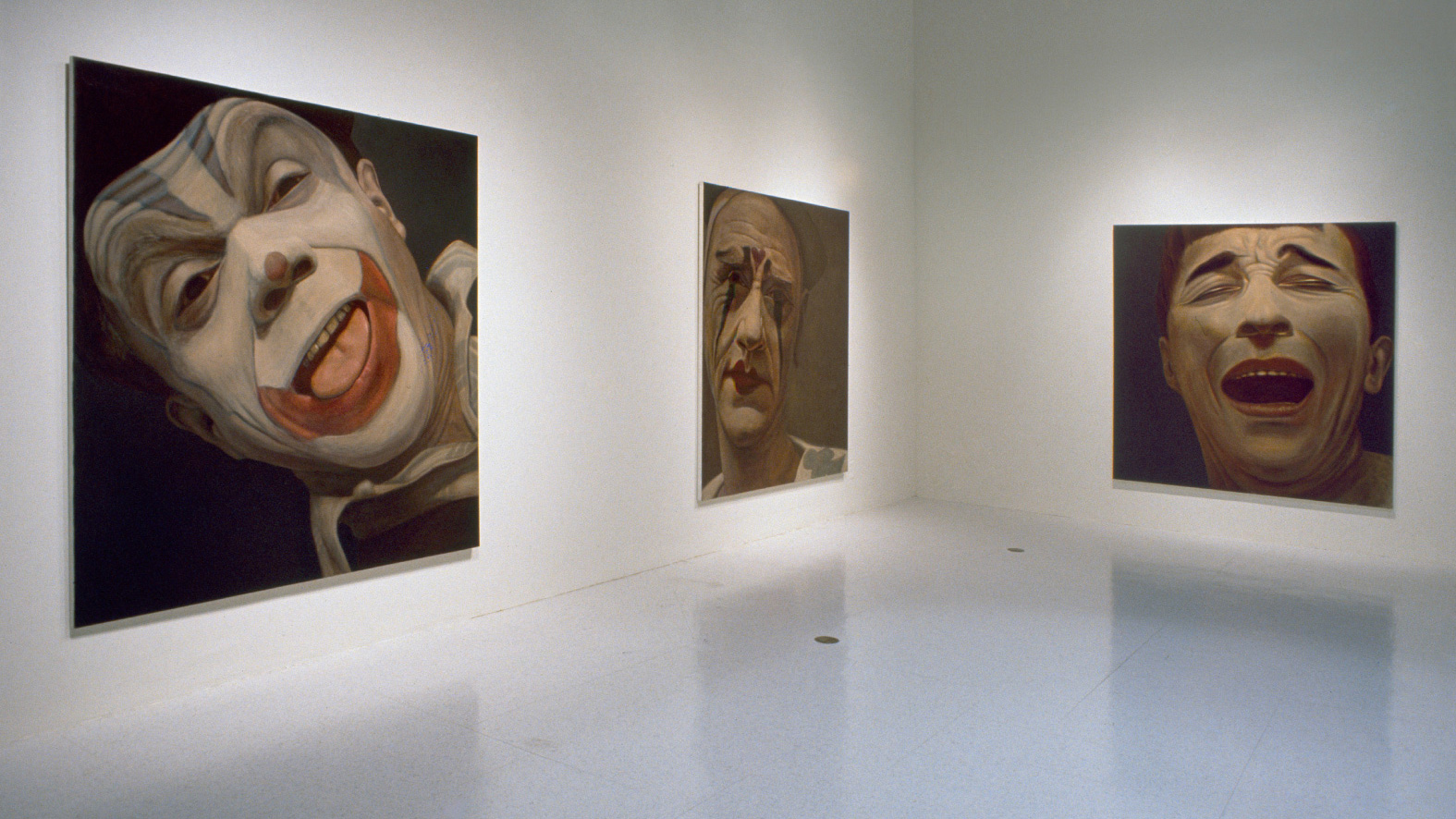The Clowns
1991 – 1992

For centuries, clowns have been used to ruefully represent the role of the artist in society; a tragicomic court jester, engaged to amuse the passing fancies of a ruling elite and, almost as a consolation prize, given license to publicly ridicule the very institutions that support him. Jusidman’s clowns do just that, portraying with carefully wrought, even Old Masterish skill a broad range of expressive emotions. The tight, dramatic cropping of his images, however, strategically limits the picture of each clown’s colorfully articulated face. It underscores the wide-eyed smile and narrow frown as merely painted surfaces. Clowns may appear to be jolly or poignant, escapist or crazed. But, even as we are mesmerized by their engaging antics, they are also always slightly creepy. Jusidman’s clowns draw a pointed parallel to artists today, almost as a multidimensional corrective for an era that blithely casts them in black-and-white terms as either sinners or saints.
—Christopher Knight, “Going Beyond the Face Value
of Clowns,” Los Angeles Times, February 18, 1997
The mind of the beholder also contains both art histories and personal histories that dictate our predispositions and expectations in regards to artworks. I cannot remain indifferent to the Venetian technique purposefully exploited here, nor to the degraded practice of painting clowns. But I do not wish to stage just a stylized meeting of high art and low art. I hope to emphasize the lowliness of the low as well as the heights of the high by contrasting formal and thematic features that cannot be experientially separated from each other. These paintings are intended to bring about complex reactions, concurrently attraction and repulsion, and hopefully a sense of detached satisfaction in sorting out one’s own predispositions. Here again, the effects of the paintings are not private feelings but public responses, which I hope can be dissected while retaining their vitality.
—Yishai Jusidman
src="../wp-content/uploads/yishai-jusidman-the-clowns-1.jpg">
src="../wp-content/uploads/yishai-jusidman-the-clowns-2.jpg">
src="../wp-content/uploads/yishai-jusidman-the-clowns-3.jpg">
src="../wp-content/uploads/yishai-jusidman-the-clowns-4.jpg">
src="../wp-content/uploads/yishai-jusidman-the-clowns-5.jpg">
src="../wp-content/uploads/yishai-jusidman-the-clowns-6.jpg">
src="../wp-content/uploads/yishai-jusidman-the-clowns-7.jpg">
